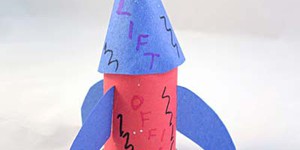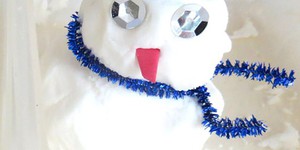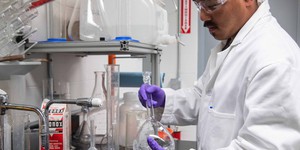Summary
Introduction
Make a colorful erupting volcano in your kitchen with lemons and baking soda!
Materials
- Pan or tray
- Lemons
- Cutting knife
- Butter knife
- Spoon
- Measuring cup
- Baking soda
- Food coloring
-
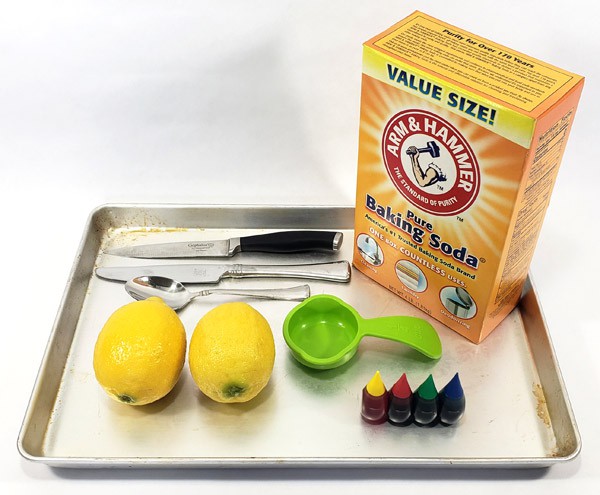 Image Credit: Ben Finio, Science Buddies / Science Buddies
Image Credit: Ben Finio, Science Buddies / Science Buddies
Prep Work
- Have an adult cut the top and bottom off the lemon so it stands upright.
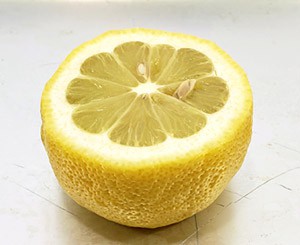 Image Credit: Ben Finio, Science Buddies / Science Buddies
Image Credit: Ben Finio, Science Buddies / Science Buddies
Instructions
- Use a butter knife and spoon to break up/partially scoop out the inside of the lemon.
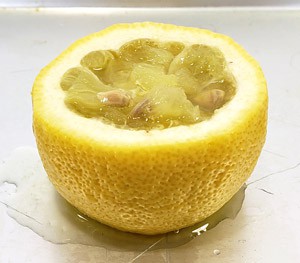 Image Credit: Ben Finio, Science Buddies / Science Buddies
Image Credit: Ben Finio, Science Buddies / Science Buddies
- Add a few drops of food coloring to the inside of the lemon.
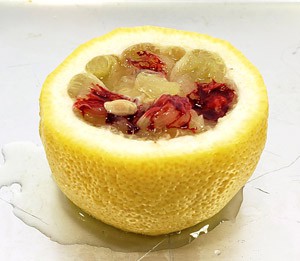 Image Credit: Ben Finio, Science Buddies / Science Buddies
Image Credit: Ben Finio, Science Buddies / Science Buddies
- Pour some baking soda on top of the lemon.
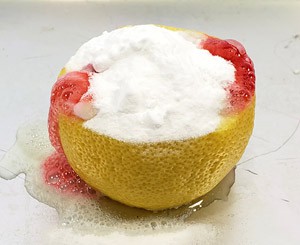 Image Credit: Ben Finio, Science Buddies / Science Buddies
Image Credit: Ben Finio, Science Buddies / Science Buddies
- Use the butter knife to mix the baking soda with the inside of the lemon.Watch it go! What happens?
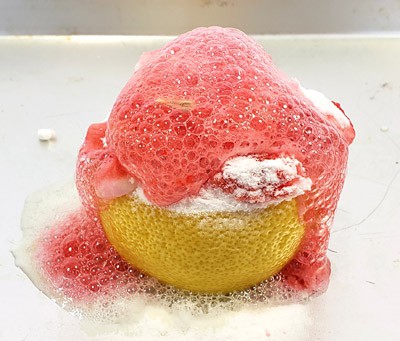 Image Credit: Ben Finio, Science Buddies / Science Buddies
Image Credit: Ben Finio, Science Buddies / Science Buddies
- Keep mixing with the knife periodically, and adding more baking soda, until the reaction stops.
Cleanup
What Happened?
When you added the baking soda, it started to fizzle and foam a little bit. When you mixed the baking soda into the lemon with a knife, it should have started foaming a lot more, bubbling up and over the sides of the lemon. Eventually the reaction slowed down and stopped. See the Digging Deeper section to learn about the chemical reaction that creates the foam!
Digging Deeper
Lemons are a type of citrus fruit, along with limes, oranges, and grapefruit. Citrus fruits are known for their sour taste, which you probably noticed if you’ve ever eaten one! Citrus fruits taste so sour because their flesh contains a lot of citric acid. Citric acid, like any other acid, is a chemical that has lots of hydrogen ions (H+). These hydrogen ions are what our taste buds recognize as a sour taste. Acids like to get rid of their hydrogen ions, and do this by reacting with other chemicals, called bases, that contain lots of hydroxide ions (OH-). When an acid and base combine (this is called an acid-base reaction), they neutralize each other.
Baking soda (NaHCO3) is a base, which means it contains hydroxide ions. When it comes in contact with an acid, such as citric acid, a chemical reaction starts. The reaction neutralizes the acid and releases carbon dioxide (CO2) gas. This gas wants to escape the liquid, creating bubbles. This is exactly what you see in the lemon volcano reaction. The citric acid, which is released into the lemon juice when mashing the fruit, reacts with the baking soda that you pour over the lemon. As soon as they both combine, carbon dioxide gas is produced and creates bubbly foam. Once the citric acid and the baking soda have neutralized each other, the reaction stops, so eventually your volcano will stop erupting.
Ask an Expert
For Further Exploration
- Try the experiment with other citrus fruits, like oranges or limes. Which type of fruit works best?




